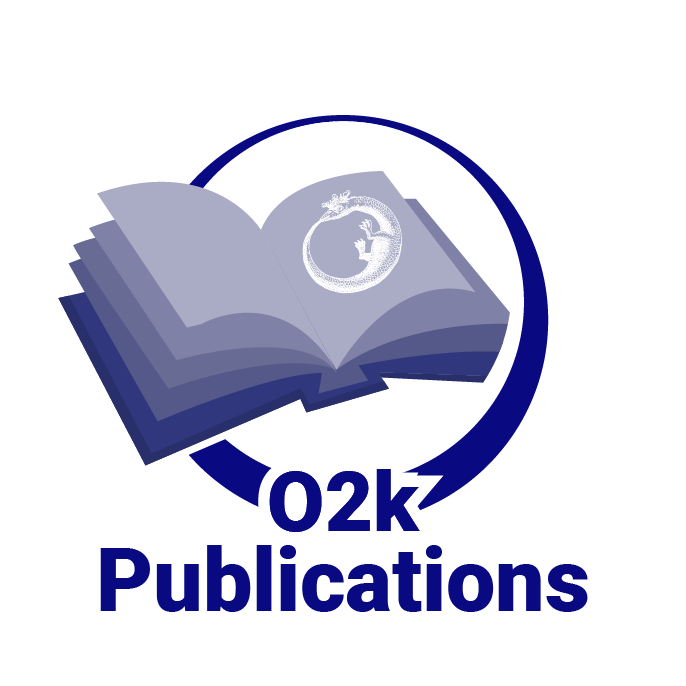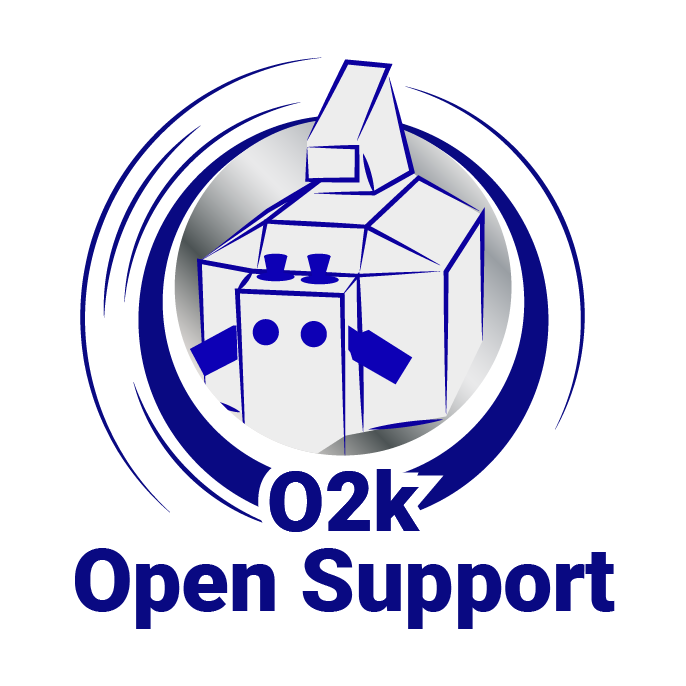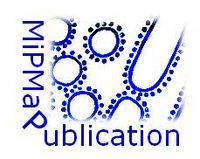O2k-Publications: Topics: Difference between revisions
Beno Marija (talk | contribs) No edit summary |
No edit summary Tag: Reverted |
||
| Line 1: | Line 1: | ||
{{Publication | |||
|title=Koizumi T, Watanabe M, Yokota T, Tsuda M, Handa H, Koya J, Nishino K, Tatsuta D, Natsui H, Kadosaka T, Koya T, Nakao M, Hagiwara H, Kamada R, Temma T, Tanaka S, Anzai T (2023) Empagliflozin suppresses mitochondrial reactive oxygen species generation and mitigates the inducibility of atrial fibrillation in diabetic rats. Front Cardiovasc Med 10:1005408. | |||
|info=https://pubmed.ncbi.nlm.nih.gov/36815024/ | |||
|authors=Koizumi Takuya, Watanabe Masaya, Yokota Takashi, Tsuda Masumi, Handa Haruka, Koya Jiro, Nishino Kotaro, Tatsuta Daishiro, Natsui Hiroyuki, Kadosaka Takahide, Koya Taro, Nakao Motoki, Hagiwara Hikaru, Kamada Rui, Temma Taro, Tanaka Shinya, Anzai Toshihisa | |||
|year=2023 | |||
|journal=Front Cardiovasc Med | |||
|abstract=Introduction: Recent studies have demonstrated that sodium-glucose co-transporter-2 inhibitors (SGLT2-i) reduce the risk of atrial fibrillation (AF) in patients with diabetes mellitus (DM), in which oxidative stress due to increased reactive oxygen species (ROS) contributes to the pathogenesis of AF. We aimed to further investigate this, and examine whether the SGLT2-i empagliflozin suppresses mitochondrial-ROS generation and mitigates fibrosis. | |||
Methods: A high-fat diet and low-dose streptozotocin treatment were used to induce type-2 DM (T2DM) in Sprague-Dawley rats. The rats were randomly divided into three groups: control, DM, and DM treated with empagliflozin (30 mg/kg/day) for 8 weeks. The mitochondrial respiratory capacity and ROS generation in the atrial myocardium were measured using a high-resolution respirometer. Oxidative stress markers and protein expression related to mitochondrial biogenesis and dynamics as well as the mitochondrial morphology were examined in the atrial tissue. Additionally, mitochondrial function was examined in H9c2 cardiomyoblasts. Atrial tachyarrhythmia (ATA) inducibility, interatrial conduction time (IACT), and fibrosis were also measured. | |||
Results: Inducibility of ATA, fibrosis, and IACT were increased in rats with DM when compared to controls, all of which were restored by empagliflozin treatment. In addition, the rats with DM had increased mitochondrial-ROS with an impaired complex I-linked oxidative phosphorylation capacity. Importantly, empagliflozin seemed to ameliorate these impairments in mitochondrial function. Furthermore, empagliflozin reversed the decrease in phosphorylated AMPK expression and altered protein levels related to mitochondrial biogenesis and dynamics, and increased mitochondrial content. Empagliflozin also improved mitochondrial function in H9c2 cells cultured with high glucose medium. | |||
Discussion: These data suggest that empagliflozin has a cardioprotective effect, at least in part, by reducing mitochondrial ROS generation through AMPK signaling pathways in the atrium of diabetic rats. This suggests that empagliflozin might suppress the development of AF in T2DM. | |||
|keywords=SGLT2 inhibitor; diabetes; empagliflozin; mitochondria; reactive oxygen species | |||
|mipnetlab=JP Sapporo Yokota T | |||
}} | |||
{{Labeling | |||
|area=Respiration | |||
|diseases=Cardiovascular, Diabetes | |||
|organism=Rat | |||
|tissues=Heart | |||
|preparations=Permeabilized tissue | |||
|enzymes=Complex I, Complex II;succinate dehydrogenase, Complex IV;cytochrome c oxidase | |||
|topics=ADP, Inhibitor, Redox state, Substrate | |||
|couplingstates=LEAK, OXPHOS | |||
|instruments=Oxygraph-2k, O2k-Fluorometer | |||
|additional=JP, 2023-02 | |||
}} | |||
{{OROBOROS_header_page_name}} | {{OROBOROS_header_page_name}} | ||
{{Template:OROBOROS Slogan}} | {{Template:OROBOROS Slogan}} | ||
Revision as of 09:53, 25 February 2023
| [[Has title::Koizumi T, Watanabe M, Yokota T, Tsuda M, Handa H, Koya J, Nishino K, Tatsuta D, Natsui H, Kadosaka T, Koya T, Nakao M, Hagiwara H, Kamada R, Temma T, Tanaka S, Anzai T (2023) Empagliflozin suppresses mitochondrial reactive oxygen species generation and mitigates the inducibility of atrial fibrillation in diabetic rats. Front Cardiovasc Med 10:1005408.]] |
» Has info::https://pubmed.ncbi.nlm.nih.gov/36815024/
Was written by::Koizumi Takuya, Was written by::Watanabe Masaya, Was written by::Yokota Takashi, Was written by::Tsuda Masumi, Was written by::Handa Haruka, Was written by::Koya Jiro, Was written by::Nishino Kotaro, Was written by::Tatsuta Daishiro, Was written by::Natsui Hiroyuki, Was written by::Kadosaka Takahide, Was written by::Koya Taro, Was written by::Nakao Motoki, Was written by::Hagiwara Hikaru, Was written by::Kamada Rui, Was written by::Temma Taro, Was written by::Tanaka Shinya, Was written by::Anzai Toshihisa (Was published in year::2023) Was published in journal::Front Cardiovasc Med
Abstract: [[has abstract::Introduction: Recent studies have demonstrated that sodium-glucose co-transporter-2 inhibitors (SGLT2-i) reduce the risk of atrial fibrillation (AF) in patients with diabetes mellitus (DM), in which oxidative stress due to increased reactive oxygen species (ROS) contributes to the pathogenesis of AF. We aimed to further investigate this, and examine whether the SGLT2-i empagliflozin suppresses mitochondrial-ROS generation and mitigates fibrosis.
Methods: A high-fat diet and low-dose streptozotocin treatment were used to induce type-2 DM (T2DM) in Sprague-Dawley rats. The rats were randomly divided into three groups: control, DM, and DM treated with empagliflozin (30 mg/kg/day) for 8 weeks. The mitochondrial respiratory capacity and ROS generation in the atrial myocardium were measured using a high-resolution respirometer. Oxidative stress markers and protein expression related to mitochondrial biogenesis and dynamics as well as the mitochondrial morphology were examined in the atrial tissue. Additionally, mitochondrial function was examined in H9c2 cardiomyoblasts. Atrial tachyarrhythmia (ATA) inducibility, interatrial conduction time (IACT), and fibrosis were also measured.
Results: Inducibility of ATA, fibrosis, and IACT were increased in rats with DM when compared to controls, all of which were restored by empagliflozin treatment. In addition, the rats with DM had increased mitochondrial-ROS with an impaired complex I-linked oxidative phosphorylation capacity. Importantly, empagliflozin seemed to ameliorate these impairments in mitochondrial function. Furthermore, empagliflozin reversed the decrease in phosphorylated AMPK expression and altered protein levels related to mitochondrial biogenesis and dynamics, and increased mitochondrial content. Empagliflozin also improved mitochondrial function in H9c2 cells cultured with high glucose medium.
Discussion: These data suggest that empagliflozin has a cardioprotective effect, at least in part, by reducing mitochondrial ROS generation through AMPK signaling pathways in the atrium of diabetic rats. This suggests that empagliflozin might suppress the development of AF in T2DM.]] • Keywords: has publicationkeywords::SGLT2 inhibitor; diabetes; empagliflozin; mitochondria; reactive oxygen species
• O2k-Network Lab: Was published by MiPNetLab::JP Sapporo Yokota T
Labels: MiParea: MiP area::Respiration
Pathology: Diseases::Cardiovascular, Diseases::Diabetes
Organism: Organism::Rat Tissue;cell: tissue and cell::Heart Preparation: Preparation::Permeabilized tissue Enzyme: Enzyme::Complex I, Enzyme::Complex II;succinate dehydrogenase, Enzyme::Complex IV;cytochrome c oxidase Regulation: Topic::ADP, Topic::Inhibitor, Topic::Redox state, Topic::Substrate Coupling state: Coupling states::LEAK, Coupling states::OXPHOS
HRR: Instrument and method::Oxygraph-2k, Instrument and method::O2k-Fluorometer
additional label::JP, additional label::2023-02
O2k-Publications: Topics
- Mitochondria and Cell Research - the Oroboros Ecosystem
- » Please send us references on your Oroboros O2k applications for the list of O2k-Publications, which is updated by Bioblast editors and active wiki users. → Contact: Mario Plangger
- » O2k-Publications alert - » Recent O2k-Publications
- » O2k-briefs
- [[O2k-Publications|» O2k-Publications - chronological: {{#ask:Instrument and method::Oxygraph-2k |format=count
}}]]
Mitochondrial physiology: MiP areas
Pathological states
- Alphabetical order
Stress conditions
- Alphabetical order
Organisms
- Mammals
- Model organisms
- Non-mammals
# O2k-Publications MitoPedia: Comment O2k Total 1 Birds (» Chicken) {{#ask: Instrument and method::Oxygraph-2k Mammal and model::Birds |format=count}} {{#ask: Mammal and model::Birds |format=count}} 2 Reptiles turtles, lizards, snakes, crocodiles, alligators {{#ask: Instrument and method::Oxygraph-2k Mammal and model::Reptiles |format=count}} {{#ask: Mammal and model::Reptiles |format=count}} 3 Amphibians frogs, toads, salamanders {{#ask: Instrument and method::Oxygraph-2k Mammal and model::Amphibians |format=count}} {{#ask: Mammal and model::Amphibians |format=count}} 4 Fishes bony fishes, carilaginous fishes (sharks, rays, skates) and jawless fishes (hagfish, lampreys); » Zebrafish {{#ask: Instrument and method::Oxygraph-2k Mammal and model::Fishes |format=count}} {{#ask: Mammal and model::Fishes |format=count}} 5 Hexapods insects, springtails; » Drosophila {{#ask: Instrument and method::Oxygraph-2k Mammal and model::Hexapods |format=count}} {{#ask: Mammal and model::Hexapods |format=count}} 6 Crustaceans crabs, shrimp, barnacles, etc.; » Artemia {{#ask: Instrument and method::Oxygraph-2k Mammal and model::Crustaceans |format=count}} {{#ask: Mammal and model::Crustaceans |format=count}} 7 Annelids polychaetes, e.g. lugworm Arenicola marina, oligochaetes, leeches {{#ask: Instrument and method::Oxygraph-2k Mammal and model::Annelids |format=count}} {{#ask: Mammal and model::Annelids |format=count}} 8 Molluscs gastropods, cephalopods, bivalves {{#ask: Instrument and method::Oxygraph-2k Mammal and model::Molluscs |format=count}} {{#ask: Mammal and model::Molluscs |format=count}} 9 Nematodes » Caenorhabditis elegans {{#ask: Instrument and method::Oxygraph-2k Mammal and model::Nematodes |format=count}} {{#ask: Mammal and model::Nematodes |format=count}} 10 Other invertebrates urocordates (e.g. ascidians, sea squirts); cephalochordates (amphioxus, lancelets); echinoderms; chelicerates (e.g. spiders, scorpions, horseshoe crabs); myriapods (millipedes, centipedes); gastrotrichs; rotifers; ctenophores; nemerteans; tardigrades; platyhelminthes; cnidaria; porifera; ... {{#ask: Instrument and method::Oxygraph-2k Mammal and model::Other invertebrates |format=count}} {{#ask: Mammal and model::Other invertebrates |format=count}} 11 Fungi yeast, molds, mushrooms, etc.; » Saccharomyces cerevisiae {{#ask: Instrument and method::Oxygraph-2k Mammal and model::Fungi |format=count}} {{#ask: Mammal and model::Fungi |format=count}} 12 Plants {{#ask: Instrument and method::Oxygraph-2k Mammal and model::Plants |format=count}} {{#ask: Mammal and model::Plants |format=count}} 13 Protists amoebas, ciliates, trypanosomes, dinoflagellates, diatoms, green algae, etc. {{#ask: Instrument and method::Oxygraph-2k Mammal and model::Protists |format=count}} {{#ask: Mammal and model::Protists |format=count}} 14 Eubacteria true bacteria, cyanobacteria, spirochetes {{#ask: Instrument and method::Oxygraph-2k Mammal and model::Eubacteria |format=count}} {{#ask: Mammal and model::Eubacteria |format=count}} 15 Archaea archaebacteria {{#ask: Instrument and method::Oxygraph-2k Mammal and model::Archea |format=count}} {{#ask: Mammal and model::Archea |format=count}}
Tissues and cells
- Tissues - alphabetical order
- Cell types - alphabetical order
- Cell lines - alphabetical order
Preparations
Enzymes
- Alphabetical order
Regulation
- Alphabetical order
Coupling-control
# O2k-Publications MitoPedia: Coupling-control states Comment O2k Total 1 P  OXPHOS capacity
OXPHOS capacity
Oxidative phosphorylation capacity, saturating [ADP] {{#ask:Instrument and method::Oxygraph-2kCoupling states::OXPHOS |format=count}} {{#ask:Coupling states::OXPHOS |format=count}} 2 R  ROUTINE respiration
ROUTINE respiration
Physiological state, living cells {{#ask:Instrument and method::Oxygraph-2kCoupling states::ROUTINE |format=count}} {{#ask:Coupling states::ROUTINE |format=count}} 3 E  ET capacity
ET capacity
Maximal noncoupled respiration {{#ask:Instrument and method::Oxygraph-2kCoupling states::ET |format=count}} {{#ask:Coupling states::ET |format=count}} 4 L  LEAK respiration
LEAK respiration
Resting state, non-phosphorylating respiration {{#ask:Instrument and method::Oxygraph-2kCoupling states::LEAK |format=count}} {{#ask:Coupling states::LEAK |format=count}}
Pathway control
MiPMap combinations - examples
- Examples for specific combinations
# O2k-Publications MitoPedia: Comment O2k Total 1 O2k-Publications: Human skeletal muscle {{#ask:Instrument and method::Oxygraph-2kTissue and cell type::Skeletal muscle |format=count}} {{#ask:Tissue and cell type::Skeletal muscle |format=count}} 2 O2k-Publications: Human heart {{#ask:Instrument and method::Oxygraph-2kTissue and cell type::Heart |format=count}} {{#ask:Tissue and cell type::Heart |format=count}} 3 O2k-Publications: Skeletal muscle - human vs mouse {{#ask:Instrument and method::Oxygraph-2kMammal and model::Human Mammal and model::Mouse Tissue and cell::Skeletal muscle |format=count}} {{#ask:Mammal and model::Human Mammal and model::Mouse Tissue and cell::Skeletal muscle |format=count}}
- Browse data
O2k-Manuals and protocols and specific instrumental applications
# O2k-Publications MitoPedia: Comment O2k Total 1 Twin-Flow respirometry {{#ask:Instrument and method::Oxygraph-2kAdditional label:: Twin-Flow |format=count}} {{#ask:Additional label:: Twin-Flow |format=count}} 2 Separate DatLab applications {{#ask:Instrument and method::Oxygraph-2kAdditional label::DatLab |format=count}} {{#ask:Additional label::DatLab |format=count}}








